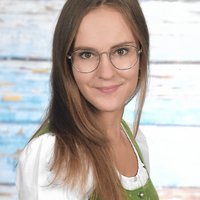When nature shows its colorful side and the leaves change color, when the air becomes clearer, the temperatures drop and the days slowly become shorter, then it is time for the grazing animals to return home to the stable. Autumn is also a time of traditions and customs. In this blog post you will learn about the importance of alpine farming in general and what tradition lies behind the cattle drive in the Ennstal. We were able to accompany him on the Walcheralm in Ramsau am Dachstein:
Origin and significance of alpine farming
Grazing in alpine meadows has always played an important role in agriculture. What comes to mind when you hear the term alpine farming? Many people think of enjoyment and relaxation, watching cows grazing and experiencing eventful hikes. But alpine farming also plays an important role from an ecological point of view: natural hazards such as avalanches or landslides can be minimized through careful choice of locations. Alpine pastures are also among the most species-rich habitats in the Alps. The production of butter, cheese and milk is also important for the businesses in the valley. Dairy farmers manage the alpine pastures with great commitment and care and also shape the cultural landscape of Austria.
Background of the traditional cattle drive
The day before the animals are driven into the valley, the so-called Scottish stirring takes place. The last alpine milk is heated in a copper kettle and then mixed with buttermilk and sour milk. The curdled “Scot” is distributed into small bowls and stirred until it is completely fine. In the region around Schladming it is often refined with raisins (wine berries) or cinnamon.
On the day of the cattle drive, the “wreathing” begins early in the morning after milking, including on the Walcheralm at the foot of the Dachstein. As long as the summer has been accident-free and all animals return safely to the valley, the cows will be decorated with lovingly made colorful flower wreaths, ribbons and signs to celebrate the day. In order to send a sign of mourning, in the event of a loss or death, colorful jewelry is avoided and the jewelry is kept dark.
The bell cow leads the herd with her owner. It is decorated with a neck wreath, a forehead wreath and the so-called “horn chimney”. All other cows receive forehead wreaths. At the end of the procession is the dairymaid, who treats the spectators along the way with specialties. These traditionally include the Raungerl, which are small cubes of shortcrust pastry that were baked in hot fat until golden and then rolled in cinnamon and sugar.
As a thank you for the successful summer, the annual festival on the farm has developed from the tradition of the cattle drive on the Walcheralm, at which the cows are happily welcomed into the valley. A tradition that will hopefully be carried on with future generations!







